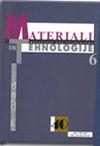飞秒激光织构n型硅表面的润湿性研究
IF 0.6
4区 材料科学
Q4 MATERIALS SCIENCE, MULTIDISCIPLINARY
引用次数: 0
摘要
本研究考察了用飞秒激光织构的n型硅表面的润湿行为。通过采用三种不同的模式,即方柱、微凹窝和周向凹槽,并操纵关键的飞秒激光参数,如激光功率(范围从8 W到12 W)和重复次数(范围从40到60),硅表面的润湿性得到了改善。以蒸馏去离子水为测试液,采用无基滴法测量接触角,评价了表面的润湿性。织构表面表现出从亲水性到疏水性的不同润湿性特征。在峰值激光功率为12 W,重复60次,最低间距为160µm的条件下,观察到表面的疏水行为。对于方柱和微窝纹理,分别测量了146°和120°的接触角。相反,当接触角为20°时,周向凹槽表现出亲水性。这些结果是在激光功率为10 W和8 W,更高的音高值和增加重复的情况下实现的。接触角随着螺距的增加、重复次数的减少和激光功率的减小而减小。基于实验结果,可以得出结论,硅表面的润湿性可以通过单步激光烧蚀技术来控制。通过仔细调整关键的飞秒激光参数和几何特征,可以实现所需的润湿性特性。本文章由计算机程序翻译,如有差异,请以英文原文为准。
WETTABILITY STUDIES ON FEMTOSECOND-¬LASER-TEXTURED N-TYPE SILICON SURFACES
This present study examines the wetting behavior of N-type silicon surfaces that have been textured using a femtosecond laser. By employing three different patterns, i.e., square pillars, micro dimples, and circumferential grooves, and manipulating key femtosecond laser parameters such as laser power (ranging from 8 W to 12 W) and repetitions (ranging from 40 to 60), the wettability properties of the silicon surfaces are modified. The wettability properties of the surface were evaluated by measuring the contact angle by the sessile-drop method using distilled deionized water as a testing liquid. The textured surfaces displayed various wettability characteristics, varying from hydrophilic to hydrophobic. The hydrophobic behavior was observed on surfaces with a peak laser power of 12 W, 60 repetitions, and the lowest pitch of 160 µm. For the square pillar and micro-dimple textures, contact angles of 146° and 120°, respectively, were measured. Conversely, the circumferential grooves exhibited hydrophilic behavior with a contact angle of 20°. These results were achieved at laser powers of 10 W and 8 W, higher pitch values, and increased repetitions. The contact angle decreased with an increase in pitch and a decrease in repetitions and laser power. Based on the experimental findings, it can be concluded that the wettability of silicon surfaces can be controlled for specific applications using a single-step laser ablation technique. The desired wettability characteristics can be achieved by carefully adjusting the key femtosecond-laser parameters and geometrical features.
求助全文
通过发布文献求助,成功后即可免费获取论文全文。
去求助
来源期刊

Materiali in tehnologije
工程技术-材料科学:综合
CiteScore
1.30
自引率
0.00%
发文量
73
审稿时长
4-8 weeks
期刊介绍:
The journal MATERIALI IN TEHNOLOGIJE/MATERIALS AND TECHNOLOGY is a scientific journal, devoted to original papers and review scientific papers concerned with the areas of fundamental and applied science and technology. Topics of particular interest include metallic materials, inorganic materials, polymers, vacuum technique and lately nanomaterials.
 求助内容:
求助内容: 应助结果提醒方式:
应助结果提醒方式:


